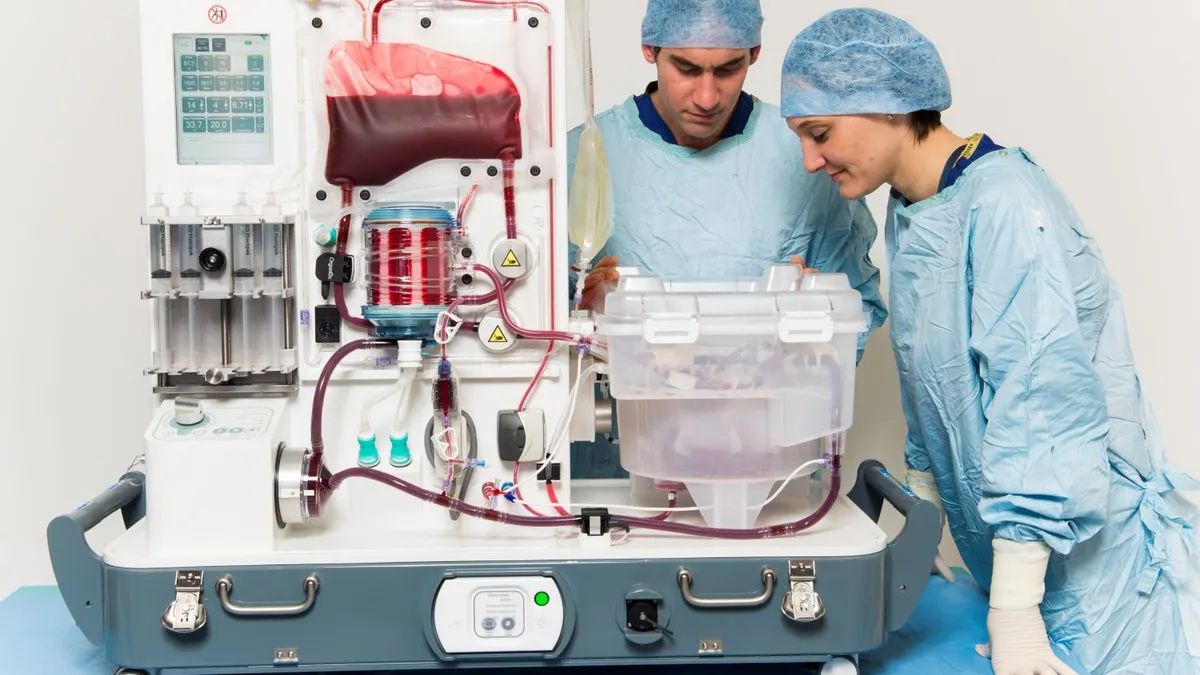A growing number of diabetes technology companies are advocating for greater access to medical devices for people with Type 2 diabetes.
In the last year, the Food and Drug Administration has granted the first expanded indications for automated insulin delivery systems in people with Type 2 diabetes. The systems combine pumps and glucose monitors to automatically adjust insulin delivery based on blood glucose levels.
Insulet received an expanded indication last summer for its Omnipod 5 pump to be used by people with Type 2 as part of an AID system. Competitor Tandem Diabetes Care followed in February with an expanded indication for the company's pumps that use its Control-IQ+ algorithm.
The American Diabetes Association has also revised its standards of care to advise healthcare providers to consider using continuous glucose monitors in adults with Type 2 diabetes who are taking glucose-lowering medications other than insulin.
MedTech Dive spoke with the ADA’s chief quality officer Osagie Ebekozien on the new standards and evidence for diabetes technologies in Type 2.
This interview has been edited for length and clarity.
MEDTECH DIVE: What do you think about using automatic insulin delivery systems for Type 2 diabetes?
OSAGIE EBEKOZIEN: At the ATTD conference in Amsterdam, there was a lot of data from different device companies on that topic.
The ADA recommends that people with diabetes should be offered appropriate diabetes technologies, because we see the impact, and we see the value of these technologies to really help support people with diabetes.
We just had FDA approval last year for some of the AID systems in Type 2, so we see the field moving in that direction.
How is insurance coverage and patient access to those devices?
It’s one of the things that we at ADA are very concerned about overall. ADA is very big on advocating for people with diabetes to have the right technologies. Managing Type 2 diabetes is complex. As we think about these growing approvals and the evidence catching up with reality on the ground that we need more therapies and technologies to support people with Type 2 diabetes, that is something we are paying very close attention to.
AID [systems] and CGMs continue to be big priority issues for our advocacy team. We’re in close communication with regulators on approvals for AID systems for Type 2 diabetes.
We’ve seen a lot of approvals and successes with our advocacy work with Type 1 diabetes and AID systems. So we’re hoping that some of that will translate into the Type 2 diabetes space.
What about CGMs for people with Type 2 diabetes?
In our 2025 standards, we’re making a bolder statement that people who are not on insulin should be offered CGMs. We’ve seen the need for that, because the data and the science are pointing in the direction that people with Type 2 diabetes who are not on insulin can benefit greatly from CGMs.
ADA is supporting that with a lot of work on the ground as well. This is where collaboration with primary care providers comes in.
We see the importance of making the recommendation, advocating for the regulatory changes and insurance coverage, but also supporting practice change at the ground level for primary care providers [and] specialty providers.
It’s one thing to make the recommendation. It's another thing to make sure it’s actually happening on the ground. We want to make sure that every patient, irrespective of where they’re receiving care, has a chance to get access to that in the real world.
What led the ADA to make the CGM recommendation?
Every year, standards of care are reviewed and updated by a comprehensive committee called the [Professional Practice Committee]. It’s a group made of key stakeholders and thought leaders in the diabetes space. We look at the previous year of evidence. In the last year, what are some of the newer studies, the strength of these studies and the rigor of these studies? A lot of priority goes to randomized controlled trials and trials that we know we can vouch for the science behind the results.
In the last year, there has been more and more evidence supporting the use of CGMs for people with Type 2 diabetes who are not on insulin, which is probably why ADA felt very comfortable making that recommendation.
We’ve heard more diabetes tech companies also talking about working with primary care physicians. What role do you see these providers having in diabetes care in the future?
I think they play a very critical role. We describe them as the first mile to the last mile. We see our work at ADA as moving from standards of care to standards of practice.
Primary care providers take care of close to 80% of people living with diabetes. Particularly people with Type 2 diabetes, the majority of them are receiving their care from a primary care provider.
Are there any other technologies you’re watching in diabetes treatment or prevention?
The role of artificial intelligence in helping us understand some of the big data and how that could potentially help with precision medicine as it relates to diabetes.
We continue to look at the evidence and the technology solutions there so we can stay ahead of this. And when those solutions become more available or more ready for market, the ADA can support patients in making the best of what’s happening in the artificial intelligence space as it relates to managing their diabetes.





















